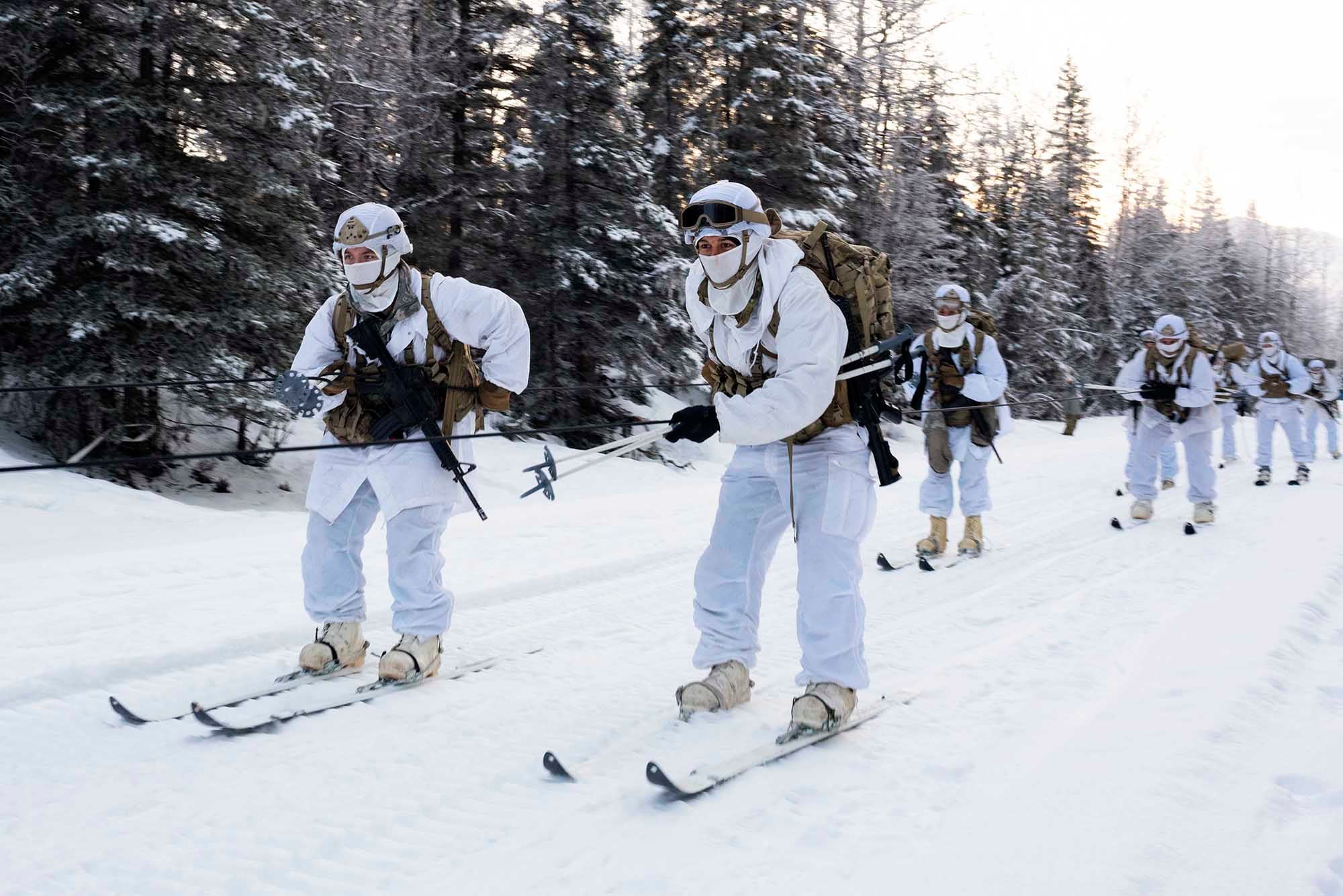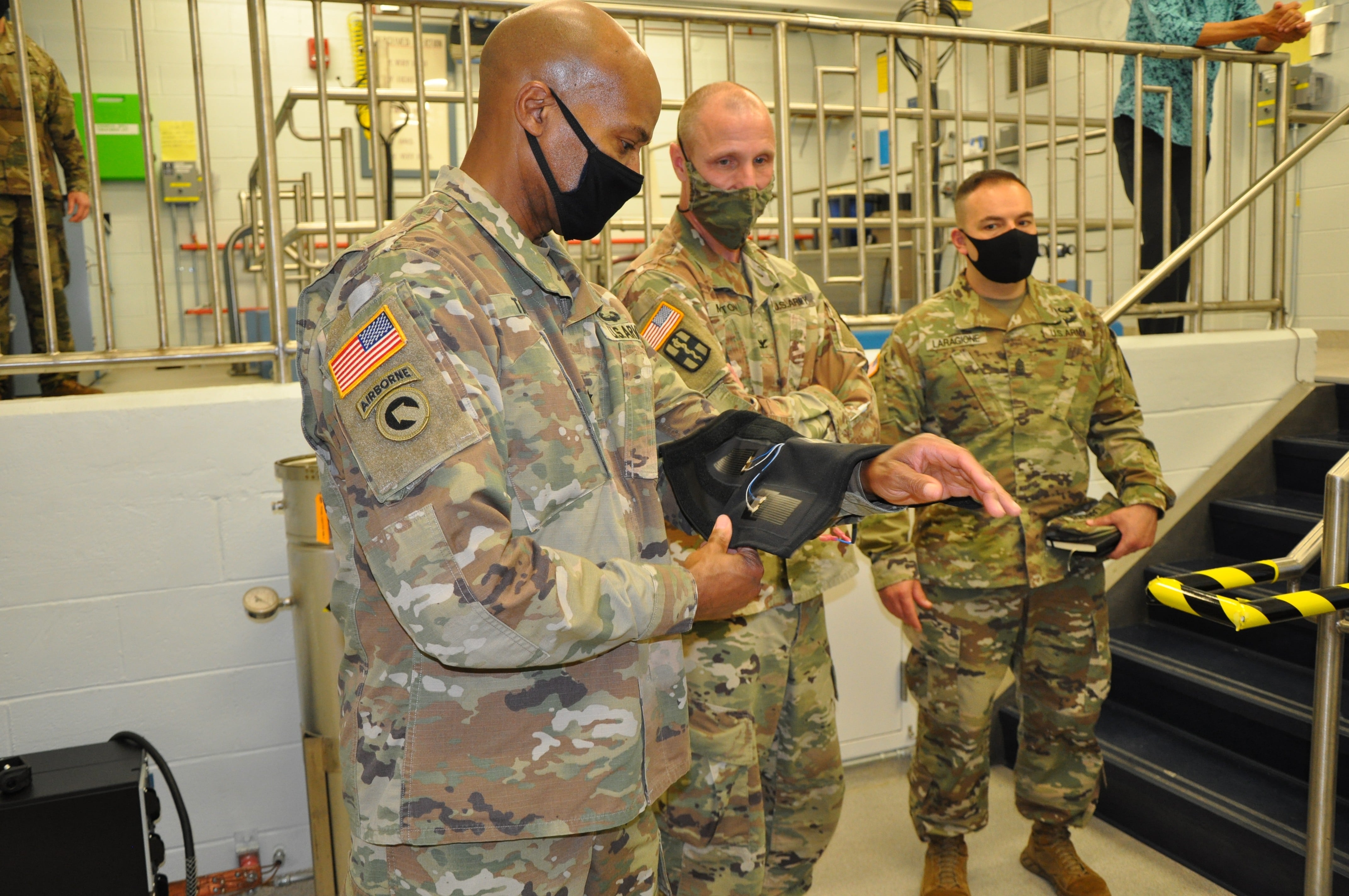The Army is testing a “forearm heating device,” a cocoa bean and tea extract and a bodybuilding technique to keep hands and fingers warm in the extreme Arctic cold, where frostbite and other injuries are prevalent.
The effort aligns with the Army’s release of its “Regaining Arctic Dominance” strategy in March, which announced plans to establish a two-star headquarters in Alaska that will manage Arctic-centric combat brigades.
Those brigades will need different gear than their counterparts in other theaters, including tracked vehicles, tents and sleds so soldiers can maneuver and fight in deep snow, challenging terrain and extreme cold.
To meet those weather demands, personnel at the U.S. Army Research Institute of Environmental Medicine are building new tools and ways to manage the climate’s deleterious effects, according to an Army news release.
The institute’s cold research team has decades of scientific research work they’re bringing to the problems. The first step is simply knowing how to prevent the cold from overtaking the soldier.
RELATED

“A very critical part of the training is to learn the early signs of cold on the body and to understand how to be comfortably cold,” Karl Friedl, a senior research scientist, said in the release. “The soldier has to know when they can readily recover and when they are entering a physiological danger zone of cold exposure where they must take action immediately.”
Simple oversights in other terrain, such as a lost glove or excessive sweating, can become debilitating or deadly at these high northern reaches.
The team has helped revise and update Technical Bulletin Medical 508, written guidance for military and healthcare providers for cold weather conditions. The last time that publication was updated was in 2005.
“We are particularly focused on the treatment sections. We are also adding new guidance derived from significant data findings on performance in cold, wet environments, like swamps and bogs,” John Castellani, cold research team member, said in the release.

A little bit of prevention or early treatment can mean the difference between a quick recovery from frostbite or lifelong nerve damage and disability.
They’re also adding an existing tool used by the U.S. Coast Guard since 2010 — the Probability of Survival Decision Aid. The tool helps responders predict an individual’s survival time during water immersion by factoring in hypothermia and dehydration.
But one of the biggest problems familiar to anyone who has operated in extreme cold, or been caught in a rough winter day without gloves, is hand dexterity.
The simple effect of numbing fingers can prevent a soldier from using their weapon, securing shelter or doing the most basic of tasks.
“The loss of hand dexterity can occur because the body’s natural reaction to more frigid temperatures is to decrease blood flow to the hands and feet,” Castellani said. “The body sends that blood to protect and warm the core, where major organs are located. The problem is that warfighters need hand dexterity for many military-relevant tasks, including shooting, handling equipment and treating injured soldiers.”
One way researchers are combating that effect is with the Personal Heating Dexterity Device, or PHD2. The device warms forearms, which keeps warm blood flowing to the hands.
Another method that the team is exploring uses a cocoa and tea-based “flavanol supplement” to improve blood flow that might reach hands and fingers.
And a technique used by advanced body builders, known as “occlusion training,” is also being tested. That technique restricts blood flow in the arm and then returns flow every five minutes.
The pump-producing method could also keep warm blood where it’s needed, refreshing it with each cycle.
All three methods are slated for field testing by the team next winter with Alaska National Guard troops during Arctic Eagle 2022.
“We’re trying to understand what changes happen in your skin and underlying tissue that help you adapt to a cold environment after you have been exposed to it for a while,” Castellani said. “This will help us develop novel countermeasures that will improve thermal toughness.”
Todd South has written about crime, courts, government and the military for multiple publications since 2004 and was named a 2014 Pulitzer finalist for a co-written project on witness intimidation. Todd is a Marine veteran of the Iraq War.




